The misc3d package provides a great implementation of the marching cubes algorithm, allowing to plot implicit surfaces.
For example, let's plot a Dupin cyclide:
a = 0.94; mu = 0.56; c = 0.34 # cyclide parameters
f <- function(x, y, z, a, c, mu){ # implicit equation f(x,y,z)=0
b <- sqrt(a^2-c^2)
(x^2+y^2+z^2-mu^2+b^2)^2 - 4*(a*x-c*mu)^2 - 4*b^2*y^2
}
# define the "voxel"
nx <- 50; ny <- 50; nz <- 25
x <- seq(-c-mu-a, abs(mu-c)+a, length=nx)
y <- seq(-mu-a, mu+a, length=ny)
z <- seq(-mu-c, mu+c, length=nz)
g <- expand.grid(x=x, y=y, z=z)
voxel <- array(with(g, f(x,y,z,a,c,mu)), c(nx,ny,nz))
# plot the surface
library(misc3d)
surf <- computeContour3d(voxel, level=0, x=x, y=y, z=z)
drawScene.rgl(makeTriangles(surf))
Nice, except that the surface is not smooth.
The documentation of drawScene.rgl says: "Object-specific rendering features such as smoothing and material are controlled by setting in the objects." I don't know what does that mean. How to get a smooth surface?
I have a solution but not a straightforward one: this solution consists in building a mesh3d object from the output of computeContour3d, and to include the surface normals in this mesh3d.
The surface normals of an implicit surface defined by f(x,y,z)=0 are simply given by the gradient of f. It is not hard to derive the gradient for this example.
gradient <- function(xyz,a,c,mu){
x <- xyz[1]; y <- xyz[2]; z <- xyz[3]
b <- sqrt(a^2-c^2)
c(
2*(2*x)*(x^2+y^2+z^2-mu^2+b^2) - 8*a*(a*x-c*mu),
2*(2*y)*(x^2+y^2+z^2-mu^2+b^2) - 8*b^2*y,
2*(2*z)*(x^2+y^2+z^2-mu^2+b^2)
)
}
Then the normals are computed as follows:
normals <- apply(surf, 1, function(xyz){
gradient(xyz,a,c,mu)
})
Now we are ready to make the mesh3d object:
mesh <- list(vb = rbind(t(surf),1),
it = matrix(1:nrow(surf), nrow=3),
primitivetype = "triangle",
normals = rbind(-normals,1))
class(mesh) <- c("mesh3d", "shape3d")
And finally to plot it with rgl:
library(rgl)
shade3d(mesh, color="red")
Nice, the surface is smooth now.
But is there a more straightforward way to get a smooth surface, without building a mesh3d object? What do they mean in the documentation: "Object-specific rendering features such as smoothing and material are controlled by setting in the objects."?




